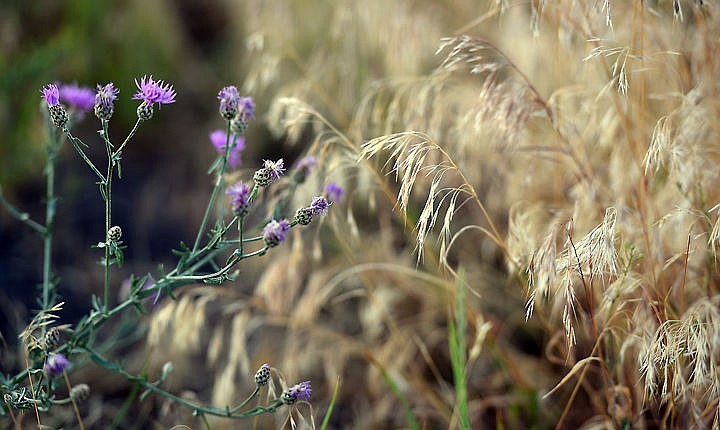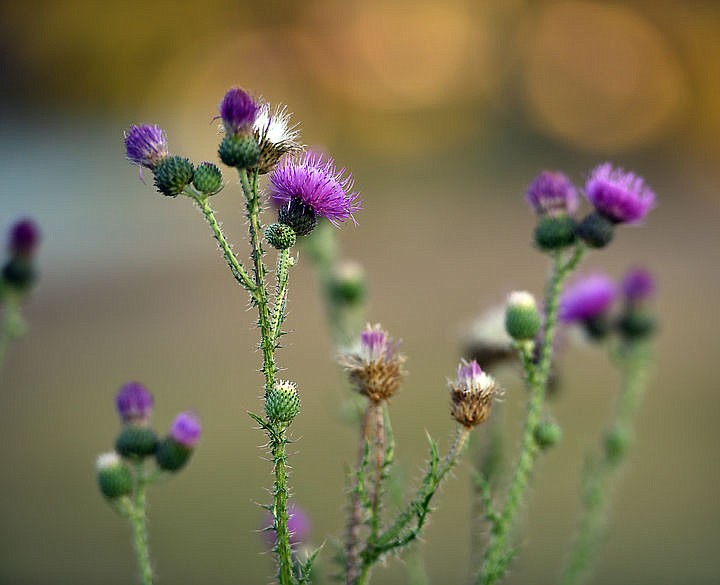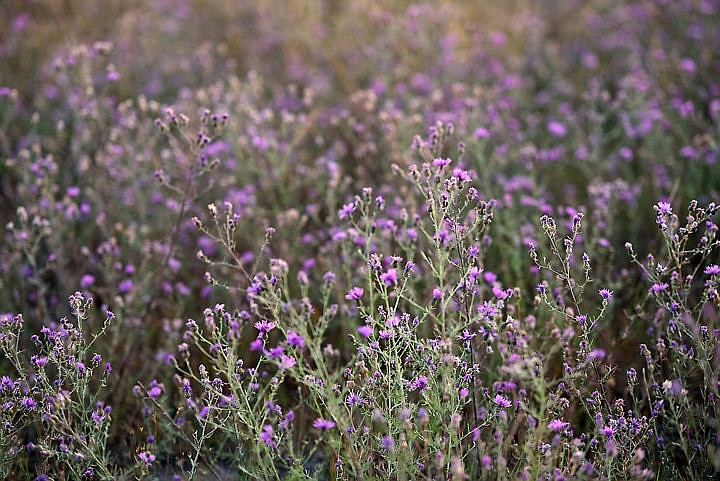Overgrazing a common problem on local small-acreage farms
Ranchettes are plentiful in the Flathead Valley, but if pastures aren’t managed correctly, weeds can also be plentiful.
A group of more than 30 small-acreage horse and cattle owners gathered near Foy’s Lake last week to learn how to avoid overgrazing their land. The free workshop was offered by the Montana State University Extension Service and will become an annual event.
“A problem that is increasing in the Flathead Valley has been the number of people who buy small acreage — five to 20 acres — and put several horses on it, wishing to live the ‘Montana Dream,’” said Pat McGlynn, MSU Extension agent for Flathead County. “These horses quickly eat all of the available plants and this is when the problem begins.”
Once the grass has been consumed, noxious weeds move in where the soil has been disturbed.
“Landowners may not realize that grasses do not store their carbohydrates, or energy in their roots like other plants,” McGlynn said.
The grass stores carbohydrates in the lower two to three inches of the blade. When people allow horses, cattle, goats or sheep to eat the grass below a 3-inch level, all the way to the soil, the grass cannot grow back, McGlynn explained.
“It has no energy reserves and the meristem, where the plant begins, has been eliminated,” she said. “Only weeds can grow. The weeds are not palatable to the livestock so they avoid them. This is the perfect storm as far as the noxious weed problem in our area.”
McGlynn said she gets calls about pasture management several times a week. She plans to offer the free workshop each summer during the third week in July.
“It was such a good group,” she said of the workshop participants. “So many people said, ‘I have to tell my neighbor about this.’”
According to MSU Range Management Specialist Jeff Mosley, 10 acres for one horse, with a five- to six-month grazing season, is the recommended stocking rate for the Flathead Valley. But the matter of how many animals a pasture can sustain depends on the length of the grazing season, whether the property is irrigated or not, and whether the animals alternate between a dry lot and grazing land.
Flathead County zoning regulations, however, allow two horses per acre in several zoning districts, including suburban agriculture 5- and 10-acre zones and some residential zones. That ratio puts Flathead pasture land at a greater risk of overgrazing if property owners don’t fully understand pasture management, McGlynn said.
As summer days get shorter late in the season, grasses shed their roots and that’s when it’s most important to rest pastures.
“People really should have their animals on a dry lot in July to August 1 and then put them back out [to pasture],” McGlynn said. “But no one wants to feed hay when they can see grass ... as soon as the overgrazed land gets a tiny bit of green, animals will overeat because the new growth is more palatable, so the pasture never gets to rest.”
Animal owners also may underestimate how much horses eat in a short amount of time, McGlynn said.
“They eat so much when they first get out there; they’re nonstop mowing machines,” she said. “Grazing a couple of hours a day isn’t actually resting the pasture. It’s actually hurting it worse than leaving [horses or cattle] out for three days and then taking them off. They can eat 2 percent of their body weight in the first couple of hours.”
An added problem with overgrazing is the potential for horses to get sand colic from inhaling sand into their stomachs when the plant material is gone, McGlynn added.
“They will also begin eating poisonous weeds if that is all that is left in the pasture,” she said. “Livestock normally instinctually will avoid poisonous material, but if left in an enclosed area with no other choices, they will consume deadly weeds.”
More information about stocking rates and grazing recommendations is available through the local MSU Extension Service; call 758-5553.
Features editor Lynnette Hintze may be reached at 758-4421 or by email at lhintze@dailyinterlake.com.








